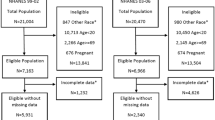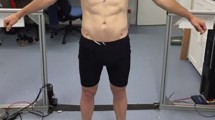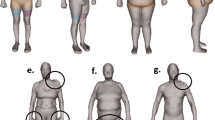Abstract
Estimates of body composition have been derived using 3-dimensional optical imaging (3DO), but no equations to date have been calibrated using a 4-component (4C) model criterion. This investigation reports the development of a novel body fat prediction formula using anthropometric data from 3DO imaging and a 4C model. Anthropometric characteristics and body composition of 179 participants were measured via 3DO (Size Stream® SS20) and a 4C model. Machine learning was used to identify significant anthropometric predictors of body fat (BF%), and stepwise/lasso regression analyses were employed to develop new 3DO-derived BF% prediction equations. The combined equation was externally cross-validated using paired 3DO and DXA assessments (n = 158), producing a R2 value of 0.78 and a constant error of (X ± SD) 0.8 ± 4.5%. 3DO BF% estimates demonstrated equivalence with DXA based on equivalence testing with no proportional bias in the Bland–Altman analysis. Machine learning methods may hold potential for enhancing 3DO-derived BF% estimates.
This is a preview of subscription content, access via your institution
Access options
Subscribe to this journal
Receive 12 print issues and online access
$259.00 per year
only $21.58 per issue
Buy this article
- Purchase on Springer Link
- Instant access to full article PDF
Prices may be subject to local taxes which are calculated during checkout


Similar content being viewed by others
References
Ng BK, Sommer MJ, Wong MC, Pagano I, Nie Y, Fan B et al. Detailed 3-dimensional body shape features predict body composition, blood metabolites, and functional strength: the Shape Up! studies. Am J Clin Nutr. 2019. https://doi.org/10.1093/ajcn/nqz218.
Tinsley GM, Moore ML, Benavides ML, Dellinger JR, Adamson BT. 3-Dimensional optical scanning for body composition assessment: a 4-component model comparison of four commercially available scanners. Clin Nutr 2020. https://doi.org/10.1016/j.clnu.2020.02.008.
Wong MC, Ng BK, Kennedy SF, Hwaung P, Liu EY, Kelly NN, et al. Children and adolescents’ anthropometrics body composition from 3-D optical surface scans. Obesity. 2019;27:1738–49. https://doi.org/10.1002/oby.22637.
Heymsfield SB, Bourgeois B, Ng BK, Sommer MJ, Li X, Shepherd JA. Digital anthropometry: a critical review. Eur J Clin Nutr. 2018;72:680–7. https://doi.org/10.1038/s41430-018-0145-7.
Tinsley GM, Moore ML, Dellinger JR, Adamson BT, Benavides ML. Digital anthropometry via three-dimensional optical scanning: evaluation of four commercially available systems. Eur J Clin Nutr. 2019. https://doi.org/10.1038/s41430-019-0526-6.
Harbin MM, Kasak A, Ostrem JD, Dengel DR. Validation of a three-dimensional body scanner for body composition measures. Eur J Clin Nutr. 2018;72:1191–4. https://doi.org/10.1038/s41430-017-0046-1.
Wang ZM, Xavier P-S, Kotler DP, Wielopolski L, Withers RT, Pierson J, et al. Multicomponent methods: Evaluation of new and traditional soft tissue mineral models by in vivo neutron activation analysis. Am J Clin Nutr. 2002;76:968–74.
Shepherd JA, Fan B, Lu Y, Wu XP, Wacker WK, Ergun DL, et al. A multinational study to develop universal standardization of whole-body bone density and composition using GE Healthcare Lunar and Hologic DXA systems. J Bone Min Res. 2012;27:2208–16. https://doi.org/10.1002/jbmr.1654.
Dixon PM, Saint-Maurice PF, Kim Y, Hibbing P, Bai Y, Welk GJ. A primer on the use of equivalence testing for evaluating measurement agreement. Med Sci sports Exerc. 2018;50:837–45. https://doi.org/10.1249/mss.0000000000001481.
Ryder JR, Ball SD. Three-dimensional body scanning as a novel technique for body composition assessment: a preliminary investigation. J Exerc Physiol Online. 2012;15:1.
Wang J, Gallagher D, Thornton JC, Yu W, Horlick M, Pi-Sunyer FX. Validation of a 3-dimensional photonic scanner for the measurement of body volumes, dimensions, and percentage body fat. Am J Clin Nutr. 2006;83:809–16.
Funding
No funding was received for the data collection leading to equation development, although the project was supported in-kind by Size Stream, LLC through provision of the 3-dimensional optical scanner. The data utilized for external validation were obtained from research supported by the National Institute of Diabetes and Digestive and Kidney Diseases (R01DK109008, R01DK111698) and registered at Clinical Trial Registration: NCT03637855.
Author information
Authors and Affiliations
Contributions
PSH interpreted results, prepared the paper, and reviewed the paper; BS performed data analyses, interpreted results, and reviewed the paper; SBH and JAS supervised data collection, interpreted results, and reviewed the paper; DB and MTS interpreted results and reviewed the paper; GMT supervised data collection, performed data analyses, interpreted results, prepared the paper, and reviewed the paper. All authors read and approved the submitted paper.
Corresponding author
Ethics declarations
Conflict of interest
Size Stream, LLC, the manufacturer of the 3D scanner utilized in the present study, supported the project through equipment loan/donation to the study sites. However, monetary funding was not provided to the study sites or investigators as part of this project. Size Stream, LLC was also involved in the study design, execution, analysis, and interpretation of the study results. DB is employed by Size Stream, LLC, and BS is a paid analysis consultant for Size Stream, LLC. SBH is on the medical advisory board for Tanita Medical. JAS has received in-kind support from Size Stream, LLC, Styku, and FIT3D and has received research funding from Hologic and General Electric (GE) Healthcare. GMT has received in-kind support from Size Stream, LLC, Naked Labs Inc., RJL Systems, MuscleSound, and Biospace, Inc. (DBA InBody). The remaining authors declare no potential conflicts of interest.
Additional information
Publisher’s note Springer Nature remains neutral with regard to jurisdictional claims in published maps and institutional affiliations.
Rights and permissions
About this article
Cite this article
Harty, P.S., Sieglinger, B., Heymsfield, S.B. et al. Novel body fat estimation using machine learning and 3-dimensional optical imaging. Eur J Clin Nutr 74, 842–845 (2020). https://doi.org/10.1038/s41430-020-0603-x
Received:
Revised:
Accepted:
Published:
Issue Date:
DOI: https://doi.org/10.1038/s41430-020-0603-x
This article is cited by
-
Mobile phone applications for 3-dimensional scanning and digital anthropometry: a precision comparison with traditional scanners
European Journal of Clinical Nutrition (2024)
-
Machine learning-based obesity classification considering 3D body scanner measurements
Scientific Reports (2023)
-
Equations for smartphone prediction of adiposity and appendicular lean mass in youth soccer players
Scientific Reports (2023)
-
Translating digital anthropometry measurements obtained from different 3D body image scanners
European Journal of Clinical Nutrition (2023)
-
Associations between 3D surface scanner derived anthropometric measurements and body composition in a cross-sectional study
European Journal of Clinical Nutrition (2023)



